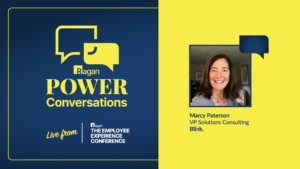Research: Key factors fueling ‘The Great Resignation’
New data from The Conference Board sheds light on return-to-work anxiety, remote work frustrations, and why employees are seeking greener pastures.

Editor’s note: We are re-running the top stories of 2021 as part of our year-end countdown.
As the pandemic rages on, 42% of workers are worried about returning to the workplace due to fear of contracting COVID-19. This marks a substantial jump from June 2021, when just 24% voiced that concern, according to data from The Conference Board.
“With headlines about the rise of the Delta variant, breakthrough cases among the vaccinated, and an overburdened health care system in much of the country, COVID-19 concerns that were subsiding just two months ago have risen,” says Rebecca Ray, Ph.D., executive vice president of human capital at The Conference Board.
The Conference Board’s August survey captured data from more than 2,400 U.S. workers on topics covering return-to-work anxiety, factors driving them to pursue new jobs and opinions about remote work. The findings confirm that “The Great Resignation” isn’t likely to subside anytime soon.
The survey reveals that more than one-third of workers are considering switching jobs within the next six months. The driving factor is a desire for flexible work arrangements. In fact, 80% of respondents cited work arrangements as “very important” or “important” in their decision to leave their current job. Survey respondents also ranked “a flexible work location” as the most desired aspect of a new job— prioritizing it over higher pay and career advancement.
Other top findings from the survey include:
1. Women are feeling pressured to return to the workplace to keep their jobs.
- When it comes to returning to the workplace, women are more concerned than men about COVID exposure, job security and mental health.
- Twenty-five percent of women report feeling pressure to return to the workplace to keep their jobs, compared with just 15% of men feeling the same.
- Millennials are more concerned than other generations about COVID exposure, job security and mental health.
2. Workers, especially women and Millennials, continue to question the wisdom of returning to the workplace given the belief that productivity remained high while working remotely.
3. More than one-third of employees might leave their organizations within the next six months.
- Twenty-nine percent of respondents are unsure if they will remain at their current job for the next six months.
- Only 7% are sure of their plans to leave within that time frame.
- Men are more certain than women that they will remain with their organizations for at least the next six months.
4. The top reason workers are looking for new jobs: inflexible work arrangements.
- More than 80% cited the importance of work arrangements such as flexible hours and work location in their decision to find a new job.
- Work arrangements were very important to more women than men.
- Work arrangements were very important to more millennials than other generations.

5. What are workers looking for the most? A flexible work location.
- For those respondents planning to leave their organizations within the next six months, “flexible work location” topped “better pay and career advancement” as the most desired aspect of a new job.

“The long-term effect of extended remote working arrangements has left its mark. Employees are much less willing to embrace the rigid, conventional work policies of the past about how and where work gets done,” Ray says. “Especially for women, to whom the bulk of caretaking and household responsibilities still unfortunately fall, the flexibility to choose what works best for them is critically important. We are starting to see companies with flexible work arrangements successfully attracting the top talent of their competitors who have adopted a more rigid stance. The challenge of attracting and retaining talent in a tightening labor market is only going to become more difficult.”
6. Most workers want hybrid work flexibility.
- Sixty-seven percent of survey respondents are willing to work a hybrid work schedule (some days remotely, some days in the workplace).
- Twenty percent of surveyed staffers want to work strictly remotely.
- Only 4% say they want to work entirely in the workplace.
- Lower-level employees are more likely than higher-level employees to work only remote work.
- More women than men want to work only remotely.
- Millennials, more than any other generation, want to work entirely remote.

7. Long-term remote work concerns include less connectedness, blurred boundaries and career stagnation.
- Fifty-eight percent of respondents said their greatest concern about working remotely was “lack of connection with colleagues.”
- Other top concerns about remote work include “lack of boundaries around work/life,” “working more hours,” “lack of visibility/exposure that may impede upward mobility,” and “increased isolation.”
- Men are more concerned than women about “lack of connection with colleagues.”
- Concern about “lack of connection with colleagues” was also greatest among Millennials:
- Women are also more concerned than men about a “lack of boundaries around work/life” and “working more hours.”
“A desire to work remotely doesn’t mitigate legitimate concerns about the downsides of remote work,” says Robin Erickson, Ph.D., principal researcher, Human Capital at The Conference Board. “For example, those who are more likely to want to work remotely—women, millennials, and individual contributors—are also most concerned with a lack of connection with colleagues when doing so. As organizations make long-term decisions about a future with remote work, they will need to bear this in mind and continuously monitor employee experience and well-being.”

8. Engagement levels are sinking.
- Compared to pre-pandemic levels, 7% fewer respondents reported that their engagement level had increased, compared to respondents answering the same question just two months ago. (In June, 37% of respondents said that their level of engagement had increased; in August, that number dropped to 30%.)
- Workers who indicated that their engagement had decreased rose from 15% in June 2021 to 19% in August.
The Conference Board’s data makes several points clear:
- Workers are eagerly seeking out greener pastures.
- More than anything else, employees want flexibility.
- Many are dreading returning to the workplace, not least of which is due to fear of contracting COVID-19.
Now, the big question is: What’s your company doing to prevent a mass employee exodus and ensure your workers’ well-being in a post-pandemic environment?







